Abstract
1. A flow of watery nasal secretion can be induced in the anaesthetized cat either by electrical stimulation of the brain stem or by the simpler procedure of stimulating the cut peripheral end of the Vidian nerve. In both instances the rate of flow of secretion was dependent on the stimulation frequency. Because brain stem stimulation caused an increase in arterial blood pressure, nasal secretion was evoked in subsequent experiments by Vidian nerve stimulation.
2. The application of nicotine to the sphenopalatine ganglion shows that the secretory fibres in the Vidian nerve relay in this ganglion and reach the nasal mucosa by way of the posterior nasal nerve.
3. Inhibition by atropine of the secretion induced by Vidian nerve stimulation indicates that the secretory fibres are cholinergic.
4. It is suggested that the induction of nasal secretion by Vidian nerve stimulation may be useful in assessing the effects of drugs on this secretion.
Full text
PDF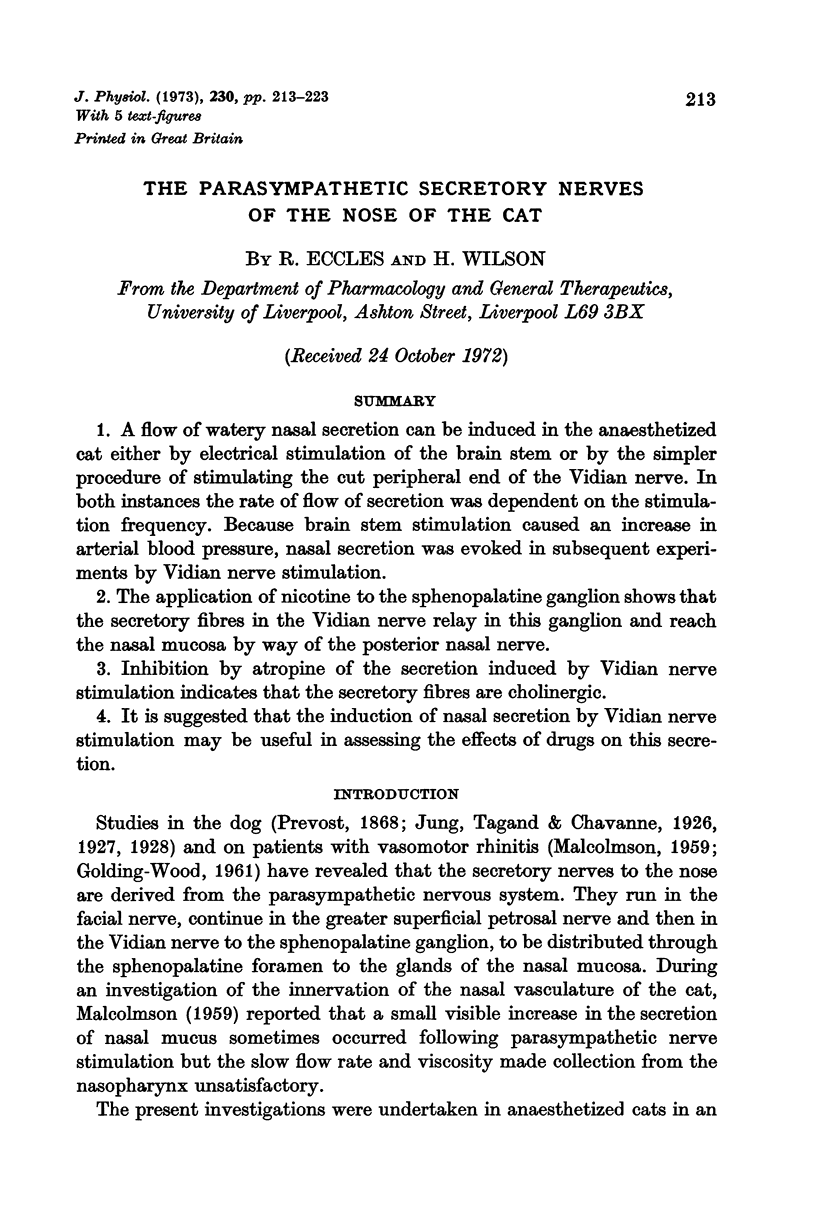
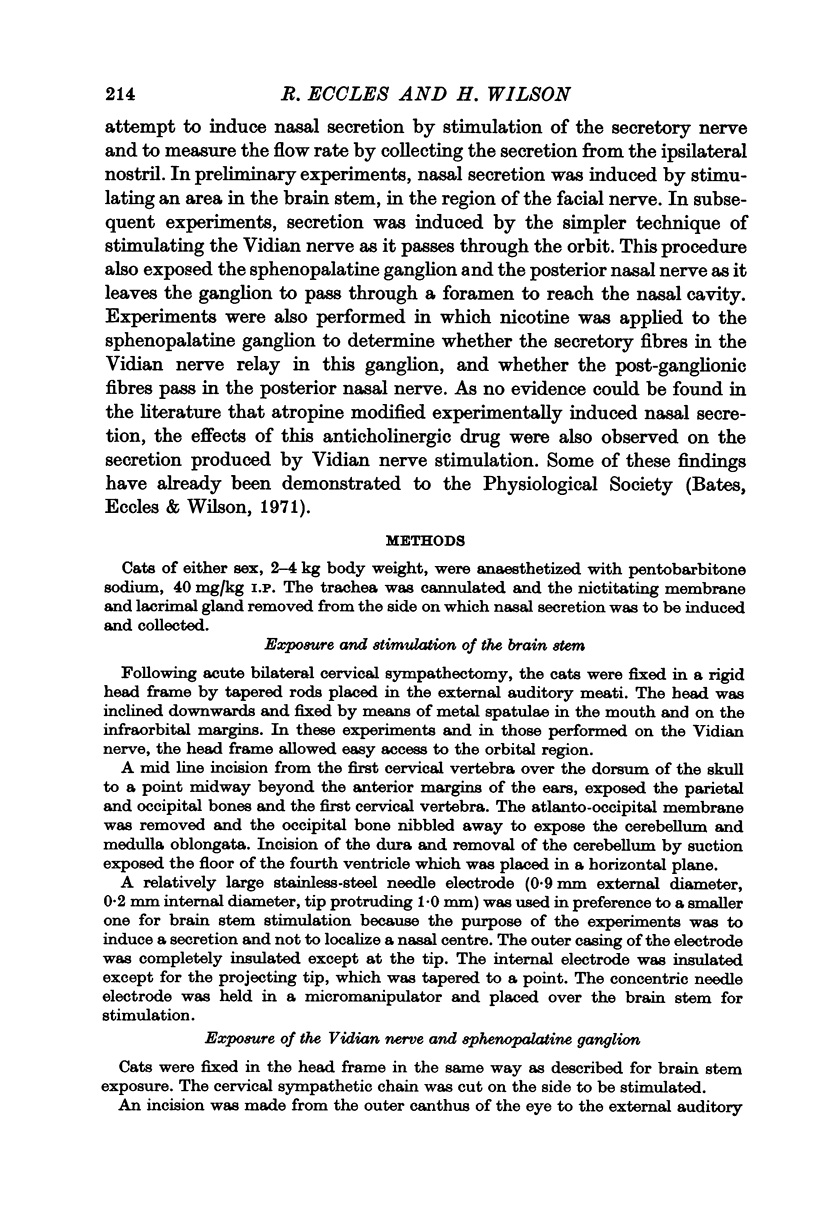
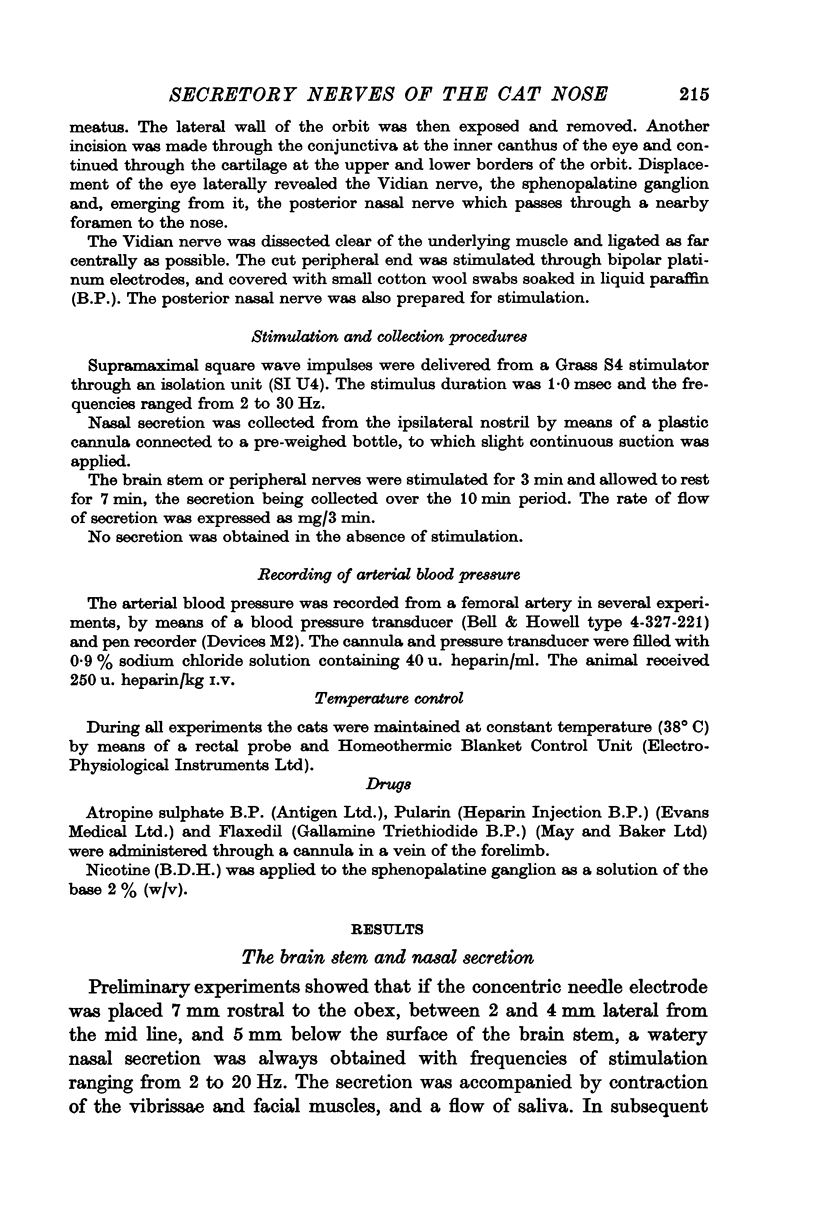
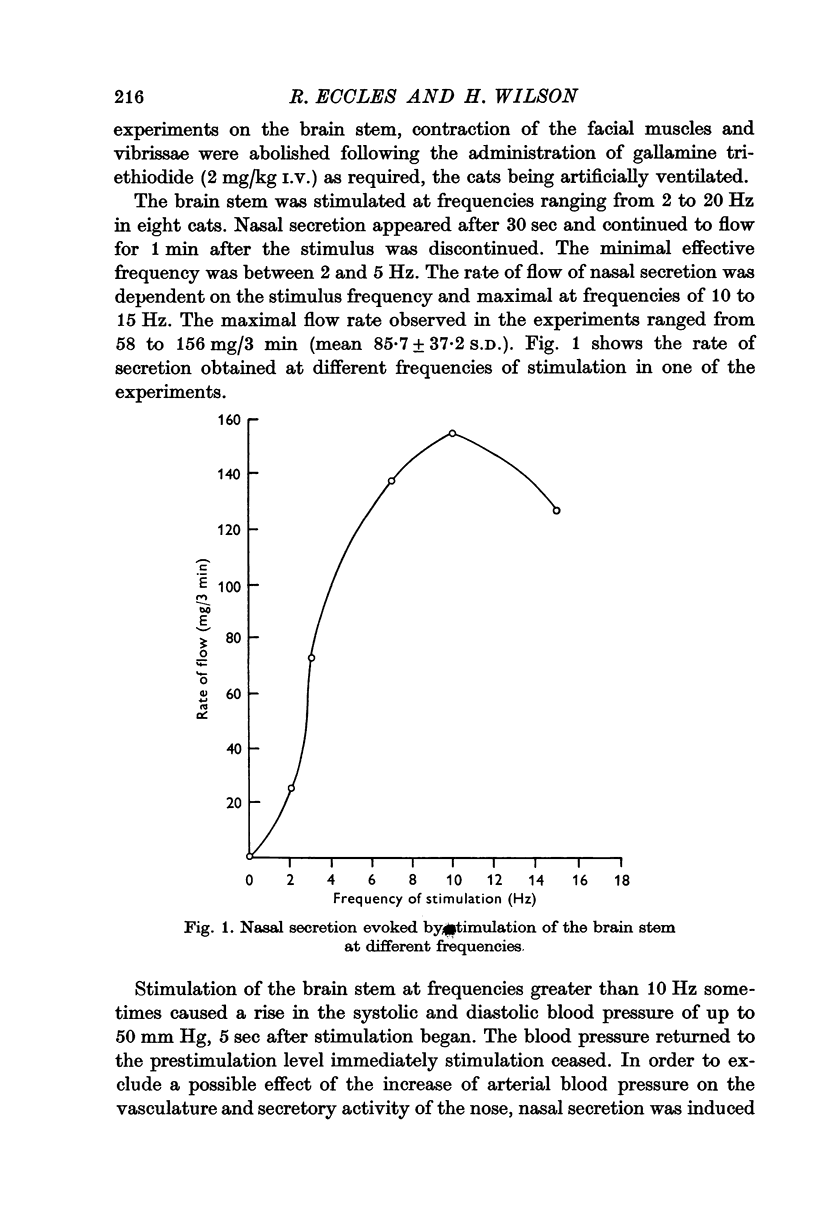
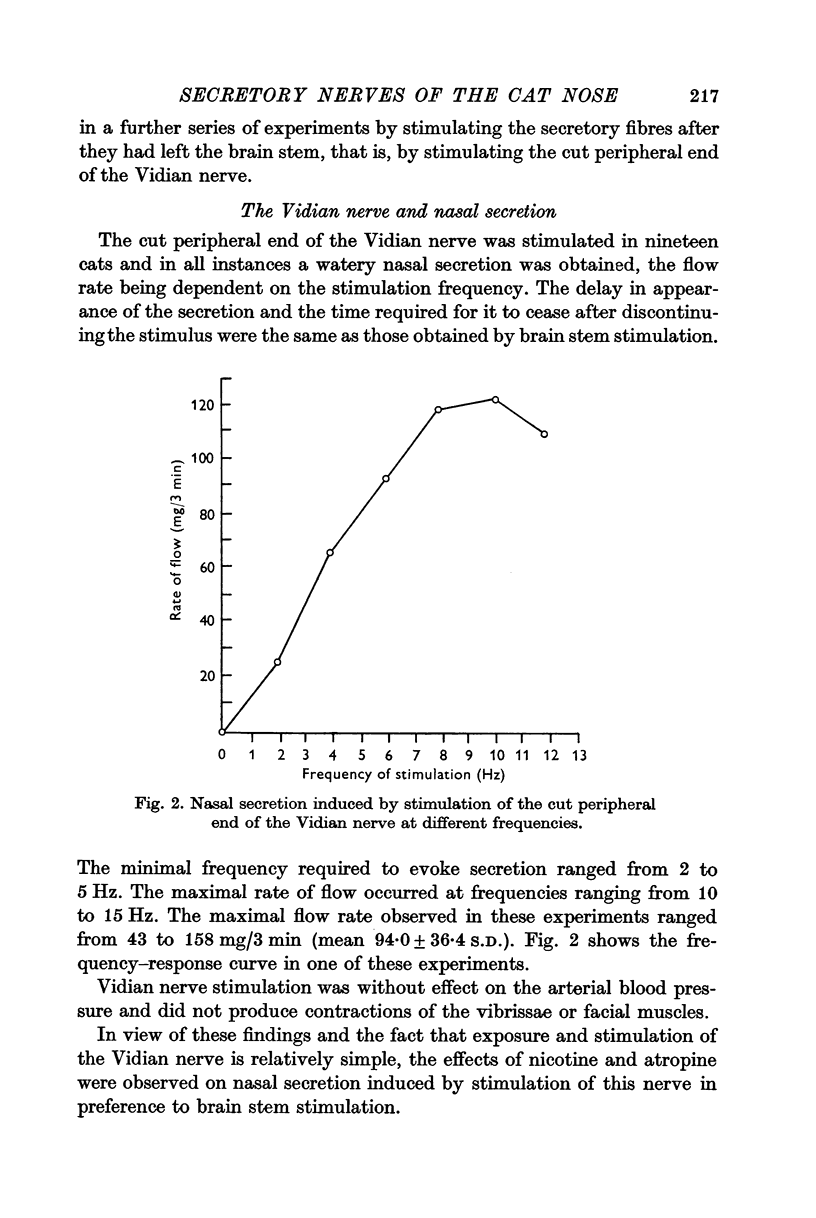
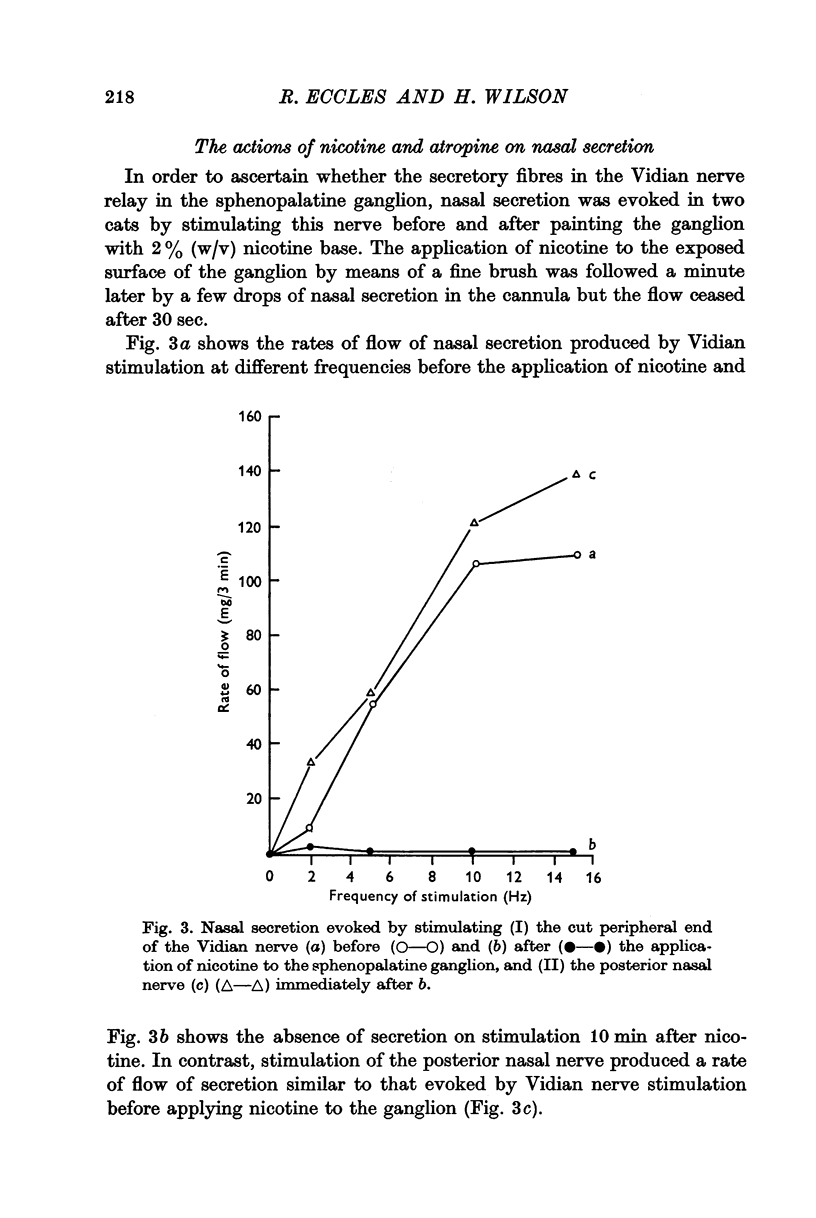
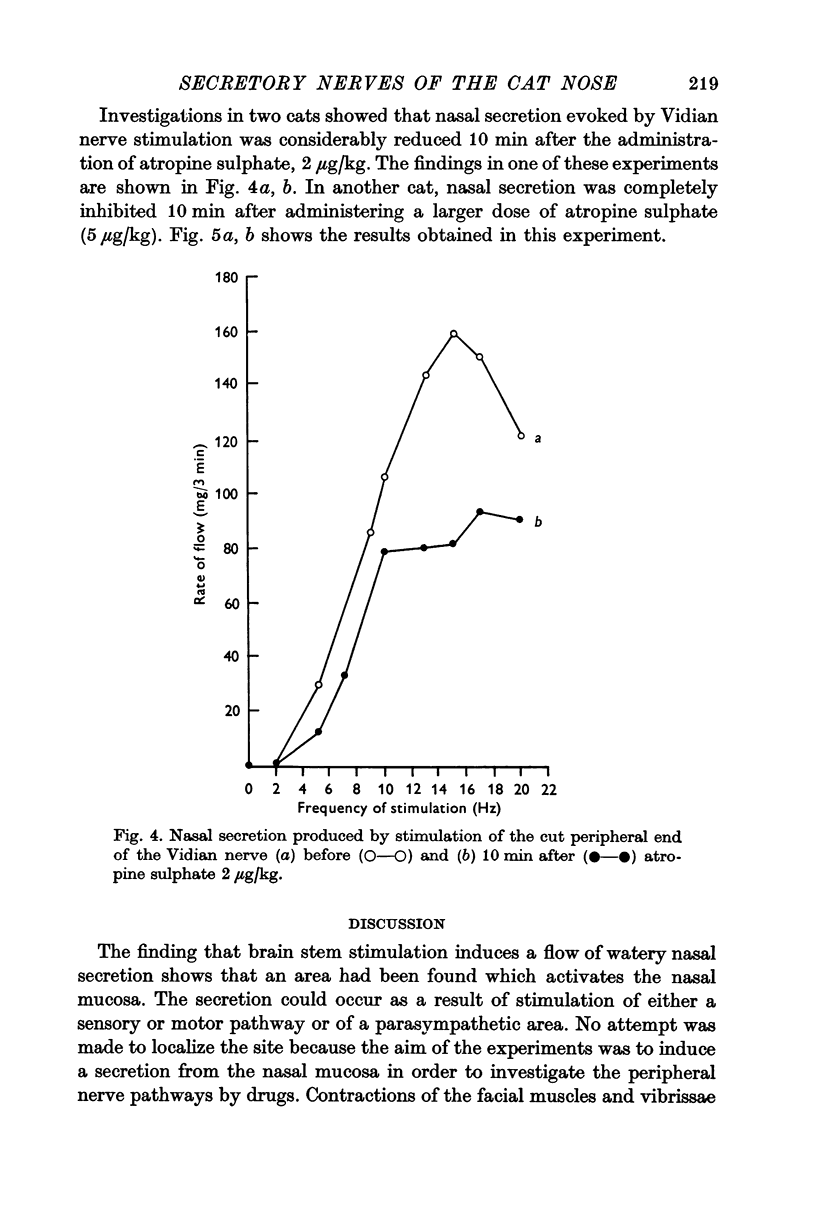
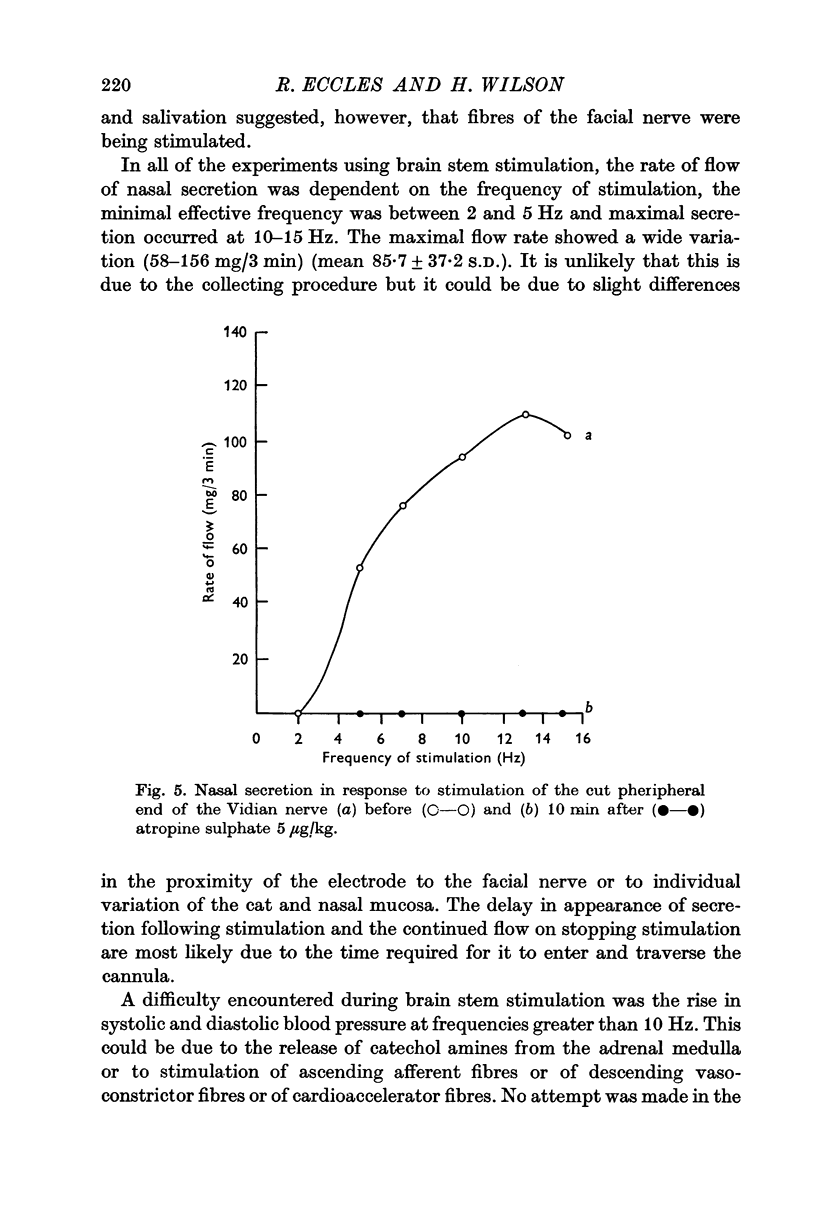
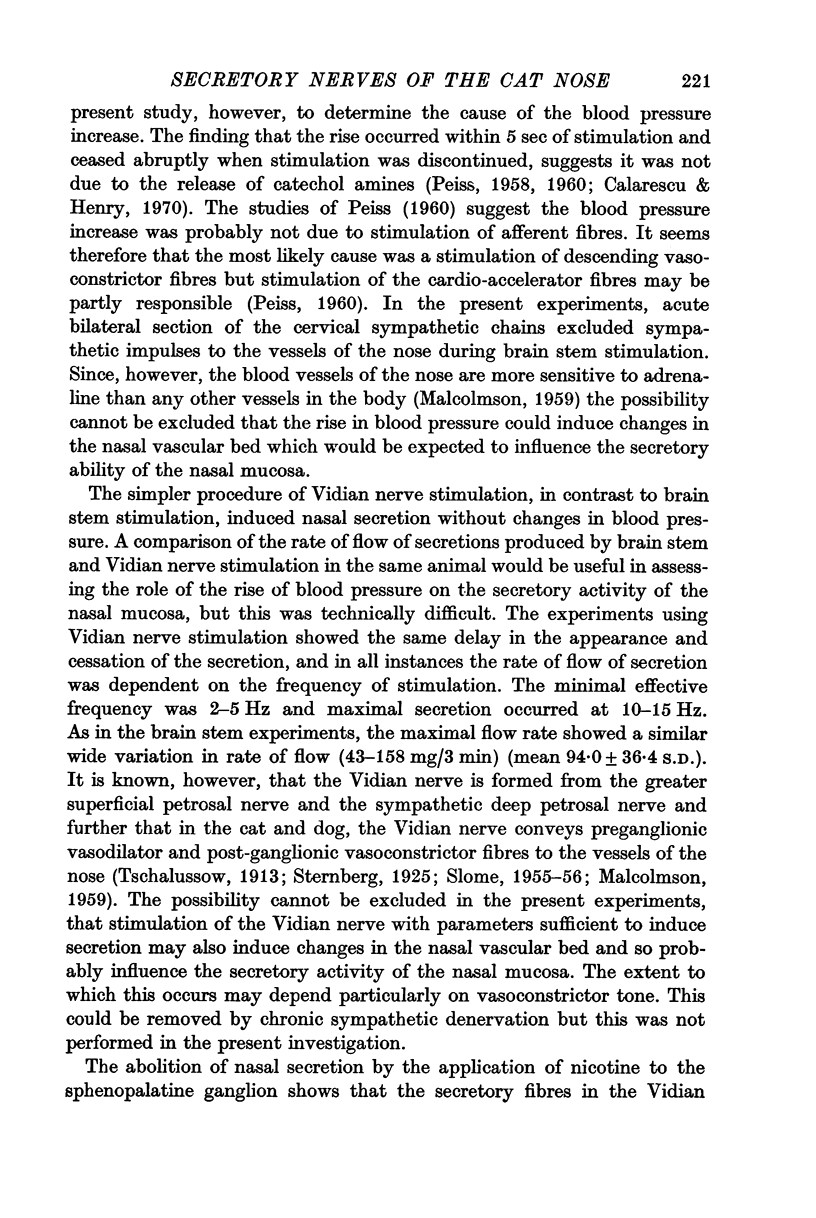
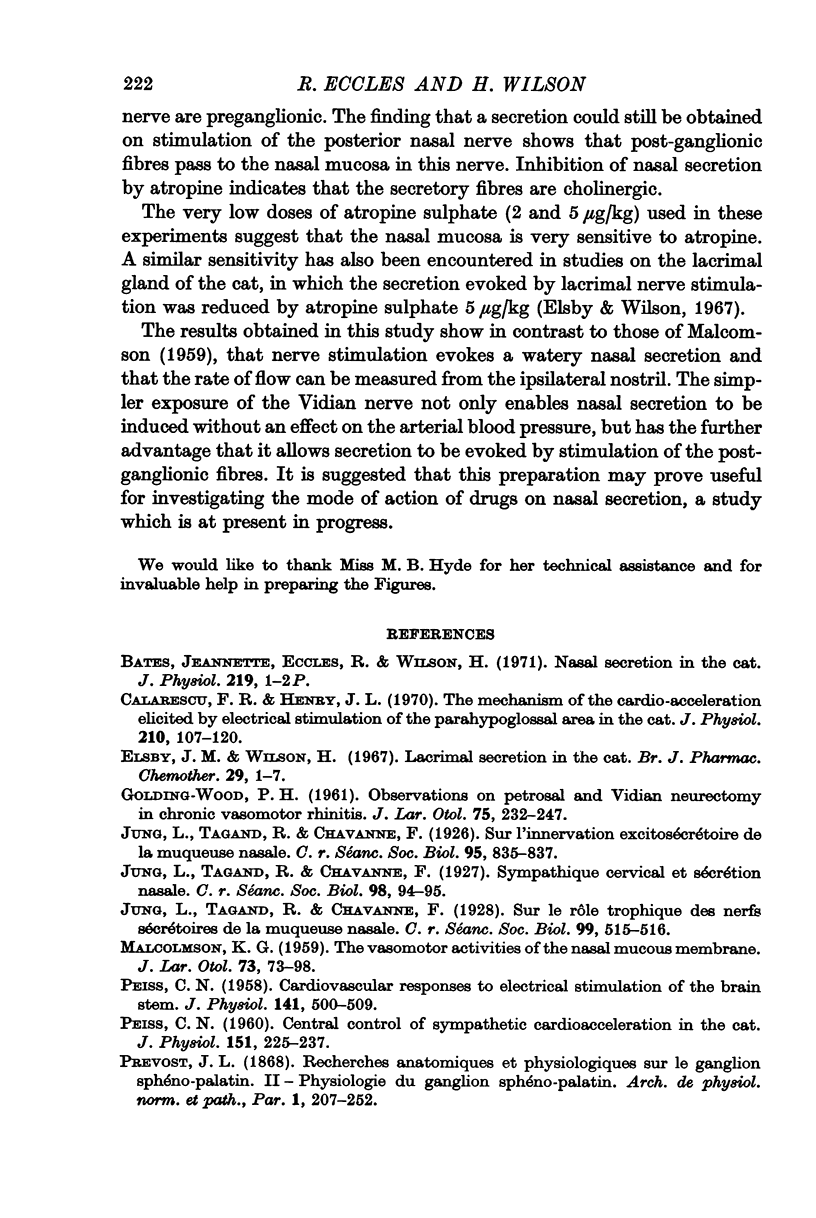

Selected References
These references are in PubMed. This may not be the complete list of references from this article.
- GOLDING-WOOD P. H. Observations on petrosal and vidian neurectomy in chronic vasomotor rhinitis. J Laryngol Otol. 1961 Mar;75:232–247. doi: 10.1017/s0022215100057716. [DOI] [PubMed] [Google Scholar]
- PEISS C. N. Cardiovascular responses to electrical stimulation of the brain stem. J Physiol. 1958 May 28;141(3):500–509. doi: 10.1113/jphysiol.1958.sp005991. [DOI] [PMC free article] [PubMed] [Google Scholar]
- PEISS C. N. Central control of sympathetic cardio-acceleration in the cat. J Physiol. 1960 May;151:225–237. doi: 10.1113/jphysiol.1960.sp006433. [DOI] [PMC free article] [PubMed] [Google Scholar]
- SLOME D. Physiology of nasal circulation. Lect Sci Basis Med. 1955 1956;5:451–468. [PubMed] [Google Scholar]


